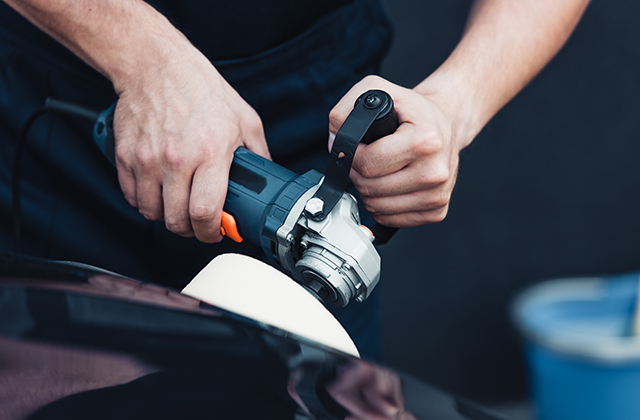Introduction
Car detailing is the process of thoroughly cleaning and restoring a car to its original condition. One of the key steps in car detailing is buffing, which involves using a buffing machine and polishing pad to remove scratches and other imperfections from the car’s paint. The RPM (revolutions per minute) of the buffing machine is an important factor in achieving a perfect finish. In this article, we’ll explore the best RPM for buffing a car and provide tips and tricks for achieving a flawless finish.
Choosing the Right RPM for Buffing
When choosing the right RPM for buffing, it’s important to consider the type of paint you’re working with. Here are some factors to consider:
- Hardness of the paint: Harder paints require a higher RPM, while softer paints require a lower RPM to avoid damaging the surface.
- Age and condition of the paint: Older, more weathered paint may require a lower RPM to avoid damaging the surface.
- Type of buffing pads: Different pads may require different RPMs for optimal performance.
Here are some recommended RPM ranges for different types of paint:
- Clearcoat paint: 1500-2500 RPM
- Single-stage paint: 1200-1800 RPM
- Soft and delicate paint: 800-1200 RPM
Choosing the Right Polishing Pad
Choosing the right polishing pad is also important for achieving a perfect finish. Here are some common types of polishing pads and their uses:
- Wool pads: Used for heavy cutting and removing deeper scratches.
- Foam pads: Used for general polishing and removing light scratches.
- Microfiber pads: Used for final polishing and removing any remaining imperfections.
When choosing a polishing pad, it’s important to consider the type of paint you’re working with and the level of imperfections you need to remove. Start with a less aggressive pad and work your way up if needed.
Buffing Technique and Safety Tips
Proper buffing technique and safety precautions are essential for achieving a flawless finish and avoiding damage to your car. Here are some tips to keep in mind:
- Always start with a clean and dry surface.
- Use a light touch and avoid pressing down too hard on the surface.
- Keep the buffing machine moving at all times to avoid overheating the surface.
- Use a slow and steady motion, working in small sections at a time.
- Wear protective gear such as gloves, eye protection, and a dust mask.
Correcting Swirl Marks with Buffing
Swirl marks are a common imperfection in car paint and can be corrected with proper buffing technique. Here’s how:
- Start with a less aggressive pad and lower RPM.
- Apply a small amount of polish to the pad and work it into the surface in a circular motion.
- Increase the RPM and apply more pressure as needed.
- Wipe away any excess polish with a microfiber towel.
- Repeat as necessary until the swirl marks are removed.
Conclusion
Buffing is an important step in car detailing that can help restore your car’s paint to its original condition. By choosing the right RPM and polishing pad, using proper technique and safety precautions, and correcting swirl marks as needed, you can achieve a perfect finish every time. Remember to always take your time and work in small sections to avoid damaging your car paint.
